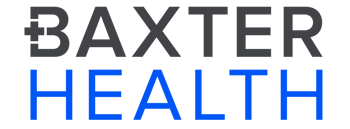The Home Team Advantage

A few years ago, Mountain Home was just like a lot of small towns in Arkansas, struggling to retain their best and brightest young people. But times have changed, thanks to steps taken by the local high school, community college and employers such as Baxter Regional. Now, in the ongoing effort to grow and retain the next generation of healthcare professionals, the hospital has taken a leading role in partnerships developing students’ career focuses.
“There are really amazing partnerships that exist here in Mountain Home, starting with the high school,” said Shannon Nachtigal, MSN, RN, NEA-BC, Baxter Regional Vice President/Patient Care Services and Chief Nursing Officer. “Mountain Home High School has, among other groups, a healthcare group of students that throughout their high school track take courses that match what they’ll take in college and what they’ll do when they get out of school.”
The partnership between Mountain Home High School and the local hospital has yielded its own group, the White Coat Program, a selective cohort designed for students with a passion for entering the healthcare field. So named because participants are presented with their own white lab coat along with a stethoscope and blood pressure cuff, students are exposed to medical coursework in addition to other required curriculum, augmenting classroom work with hands-on learning at the hospital.
“Students start early in their high school career, working toward this as the pinnacle of their high school experience,” said Sarah Brozynski, Baxter Regional’s Director of Education. “They start in the 9th and 10th grade, taking an introduction to healthcare, then progress to anatomy and physiology. Those are all prerequisites they have to have before they can even apply to the White Coat Program.
“Then, there’s an application process, and those who are chosen for the program continue their medical studies, including on Fridays when they will be doing classwork via zoom in conjunction with Harvard Medical School. They’re also in the hospital on Tuesdays and Thursdays.”
While in those hospital-based classes, students are exposed to learning scenarios usually reserved for college-level students.
“We bring them into the hospital and expose them to its different parts, from the emergency room to the lab,” Nachtigal said. “We have a high-fidelity sim lab now where we do all kinds of Code Blue practice. Code Blue is when a patient has a respiratory or cardiac arrest. Students can be the providers in that code, one of them giving the medicines, one doing CPR, various roles.”
The popularity and success of the White Coat Program served as a model for another training program, this time focusing on producing more nurses. The program identifies Mountain Home High School students to study college-level nursing courses in their last semester of high school. They then move into one semester of study at Arkansas State University - Mountain Home to complete their training as a Licensed Practical Nurse, after which time they work for Baxter Regional for a minimum of one year.
“Nursing school is no easy road,” Nachtigal said. “If you’re having to worry about choosing between working to pay bills and studying, the working to pay bills comes first. The other thing that this program helps is confidence. I can’t tell you how many stories there are of nurses working here who never would have believed they could do it had they not had people around them giving them praise and supporting them. ”
As icing on the cake, all three entities have worked together to ensure students generate no student debt as a result of studying college courses in high school and thanks to scholarships made possible through the Baxter Regional Hospital Foundation, which covers any costs left remaining after other scholarships.“
Our whole mission here at the Foundation is to support the hospital and its needs,” said Barney Larry, Foundation Executive Director. “One of the greatest things that we can do is ensure there are enough nurses at the bedside, and that’s exactly what we are trying to do. We’ve committed $600,000 for the initial investment, but are willing to do another $600,000 if needed because it does exactly what our mission is all about.”


.jpg)
